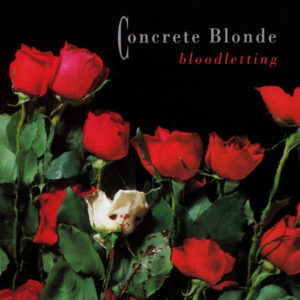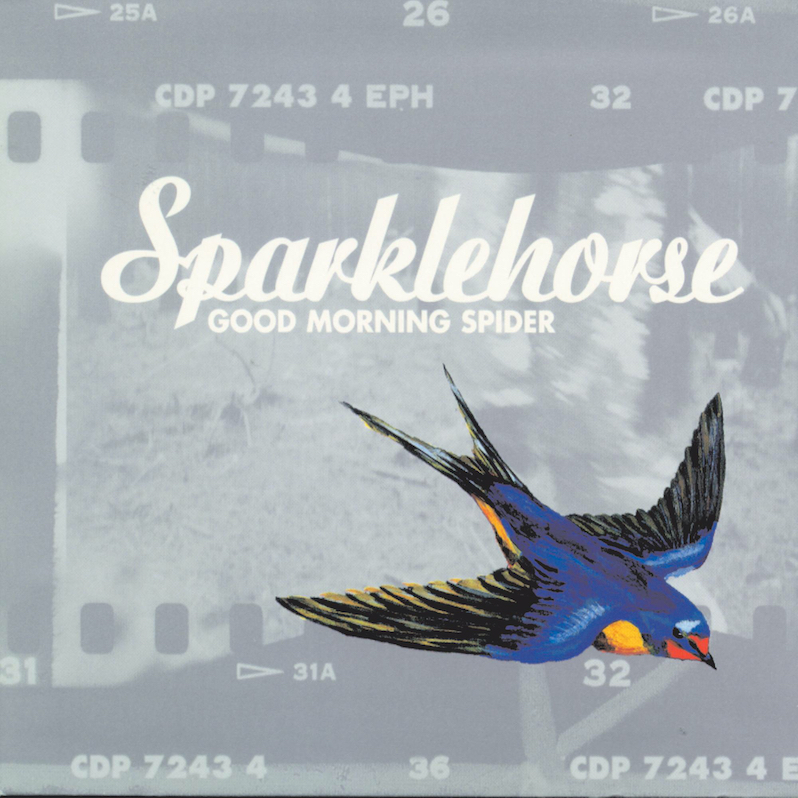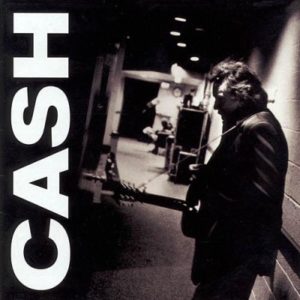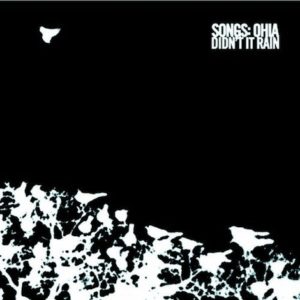10 Essential Gothic Americana tracks

Typically around this time of year, gothic rock becomes a regular staple in our playlists. And we’ve covered that before. But seeing as how gothic music isn’t entirely limited to the post-punk era in the UK, we’ve expanded into a more rustic, but no less haunting territory: Gothic Americana. We’re visiting the dark side of roots-based music, with songs of hard-luck, derelict characters, chilling narratives and sometimes tragic circumstances. But as much as gothic Americana is about the narrative, it’s also about the atmosphere. These aren’t sunday hymns or campfire strum-alongs. This is music for troubled souls, delivered with sinister ambiance. You won’t hear these songs at the Grand Ole Opry, but they just might haunt your dreams.

David Ackles – “The Road to Cairo”
from David Ackles (1968; Elektra)
Rock Island, Illinois-born singer/songwriter David Ackles released an album called American Gothic in 1972, though few moments in his discography reach the grandeur and power of “Road to Cairo,” the opening track from his self-titled debut album. Throughout the album, Ackles is backed by heavy psychedelic rock band Rhinoceros, who didn’t make that much of a dent on their own, but lend Ackles’ chilling narratives an extra punch. It’s a peculiar opening track, in a way, a slow-moving dirge that builds slowly and feels a lot like a closer (and maybe a roll-credits end to a particularly dark film). Ackles’ baritone and sense of narrative give him the feeling of a heartland Leonard Cohen, particularly in the poetic way he alludes to the estrangement from his loved ones, and the dark life he’s led away from them: “I can’t walk down this road to Cairo/They’re better thinking I’m dead.” “The Road to Cairo” offers a look into the depths of a haunted man’s soul, which you can almost see in the blurry visage of Ackles himself behind the cracked glass on the album’s cover. – JT

The Gun Club – “Preaching the Blues”
from Fire of Love (1981; Slash)
Los Angeles punk band The Gun Club was one of the first bands to play a furious blend of punk and roots music that would later come to be known as psychobilly. But rather than play up the camp value of the sound, Jeffrey Lee Pierce dug deep into the tradition of blues and murder ballad, concocting a special blend of potent sonic treats that could knock down the most sure-footed of listeners. Of all the songs on debut album Fire of Love, pretty much anything would work well here, though “Preaching the Blues” leans heavy on Delta blues tradition, taking a song originally performed by Robert Johnson and turning it into a manic, careening punk death trip. “Preaching the Blues” sits at the crossroads of Fun and Nihilistic. – JT

Concrete Blonde – “Joey”
from Bloodletting (1990; I.R.S.)
Gothic Americana? Maybe. But, in truth, “Joey” is a bit of a cheat for this list, playing out a bit more like a country song played by a goth band. And, even then, the whole goth angle was a new thing at the time for Concrete Blonde, an ’80s alt-rock band who ran with the likes of R.E.M. until Bloodletting found them mixing their prior influences with a dark, somewhat bombastic touch. On “Joey,” that meant taking a traditional heartbreak ballad, lighting up some candles, and turning that concept on its head. But, despite the shroud of darkness, all the classic elements of a country break-up song are here: From the song’s form to its solo to its stomp-stomp-stomp-clap drum intro. It’s an odd song, almost perplexing in its simplicity. And that’s exactly why it works so well. – ATB

16 Horsepower – “For Heaven’s Sake”
from Low Estate (1998; A&M)
David Eugene Edwards is kind of a gothic Americana MVP, having performed early on in the Denver Gentlemen, and continuing on into the present with his solo project, Wovenhand. From the mid-’90s to the early ’00s, however, he helmed the intense alt-country act 16 Horsepower, which blended the noisy intensity of the Gun Club with the fire-and-brimstone sermons of an 1800s preacher. In fact, in their day, they received more comparisons to authors such as Flannery O’Connor than other actual bands, which says a lot about their haunting vibe. “For Heaven’s Sake,” from 1998’s Low Estate, displays that with a little more bite than most, its intense slide riffs crashing like bolts of lightning, and Edwards’ chant of “taste and see that the Lord is good” taking on a certain sinister quality. This’ll put the fear of God in you. – JT

Sparklehorse – “Saint Mary”
from Good Morning Spider (1999; Capitol)
Sparklehorse’s Mark Linkous mostly played what you might call alternative rock. He collaborated with PJ Harvey, Tom Waits and Cracker’s David Lowery, and frequently turned his amps up to 11 when launching straight into a hard-rocking barnburner. But the late Virginia musician also had a way of tackling gentle folk with delicate beauty and heartbreaking sincerity. “Saint Mary” is a true reflection of three months spent in Saint Mary’s Hospital in London after a near-fatal overdose. He sounds frail and troubled, which is made all the more tangible through his stark, acoustic arrangement. Sadly, the depression that led him to write this song ultimately led him to take his own life in 2010, the darkness within too much for him to overcome. – JT

Johnny Cash – “I See a Darkness” (feat. Will Oldham)
from American III: Solitary Man (2000; American)
Most of Will Oldham’s dark, brooding discography could count as gothic Americana in one light or another, but this gem he wrote for his 1999 record as Bonnie “Prince” Billy (named after the song itself) is perhaps his most strikingly dark country song. Combining a folksy, first person narrative style and southern imagery with haunting philosophical thoughts on the narrator’s (perhaps Oldham’s) human nature, it’s a spooky and gut wrenching track. But the song was taken to a whole new level when Johnny Cash covered it just a year after the original was released. The song was already rather minimal in its arrangement and Cash didn’t change much along the lines of instrumentation, but his hardened voice and life experience lend a menace to lines like “But did you ever notice the kind of thoughts I got?” And Oldham even shows up to provide back up vocals, helping bring his own song to life in new-fangled form. – ATB

Angels of Light – “Two Women”
from How I Loved You (2001; Young God)
After the first breakup of Swans—which clearly didn’t take—Michael Gira took his dark visions into folk territory. That project, Angels of Light, made for a decade of music that wasn’t nearly as loud as his other band’s industrial post-punk pounding, but definitely as unsettling, and frequently as breathtaking. “Two Women,” an 11-minute standout from second album How I Loved You, is maybe the prettiest song that Gira ever released. It’s a lushly arranged ballad that swells up into a gorgeous piece of rustically orchestral majesty. And yet, deep inside that lush arrangement is a twinge of Gira’s strange, apocalyptic sensibility, with lines such as “I put your voice in my mouth” landing with less animosity, but not necessarily anything you might call comfort. – JT

Songs: Ohia – “Didn’t It Rain”
from Didn’t It Rain (2002; Secretly Canadian)
Jason Molina’s entire discography comprises heartbreakingly beautiful songs, but this one takes the dimly-lit cake. Recorded in late night sessions in a whisper-quiet industrial area in Philadelphia, Didn’t It Rain is the product of a perfectly constructed environment. The opening title track, slowly repeating the same four chords over the course of almost eight minutes, is an exercise in minimalist perfection. Molina and backing musicians Jim and Jennie quietly work through a bluesy meditation with some of the most beautiful vocal harmonies ever recorded, between messages both warm and pessimistic (“If they think you’ve got it/They’re gonna beat it out of you“). It’s rare that four chords for eight minutes seems like not enough, but “Didn’t It Rain” captures a feeling so perfectly, you never want to let it go. – JT

Castanets – “You Are the Blood”
from Cathedral (2004; Asthmatic Kitty)
San Diego isn’t exactly the kind of backdrop one would expect for a chilling gothic country song, but Castanets’ Raymond Raposa was in our corner of the country when he released “You Are the Blood,” a haunting blend of Santo and Johnny and Angelo Badalmenti. It’s gothic country as performed by actual phantoms, clanging percussion and eerie saxophone seeping through the corners of an already highly unsettling piece of music. The scariest part is the chorus of shrieks and squeaks at the beginning, but from there, the mood is set. This is some dark stuff, but strangely soulful in its western motif. It’s a long dark mosey down a dusty trail. – JT

Murder by Death – “Brother”
from In Bocca Al Luppo (2006; Tentshow/Eastwest)
Imagine if Ennio Morricone’s spaghetti western soundtracks had vocals, or if Nick Cave had a bit more Midwestern alt-country twang. That’s where Adam Turla’s quintet reside, hiding out, hatching nefarious musical plans. The Bloomington, Indiana band made a set of gloriously gloomy rock on their third album, In Bocca Al Luppo and this second track was its second single. It sets up Turla in a most common predicament: when family does bad things, how long will you tolerate them? His answer: “Fourteen years have passed since that day, and still nothing has changed.” So goes the timeline of loving, shaming, and ultimately protecting a brother wrapped up in addiction and crime, its soundtrack progressing from backwoods stomp and drawl to a clattering climax of riffs and hi-hats. – AB

